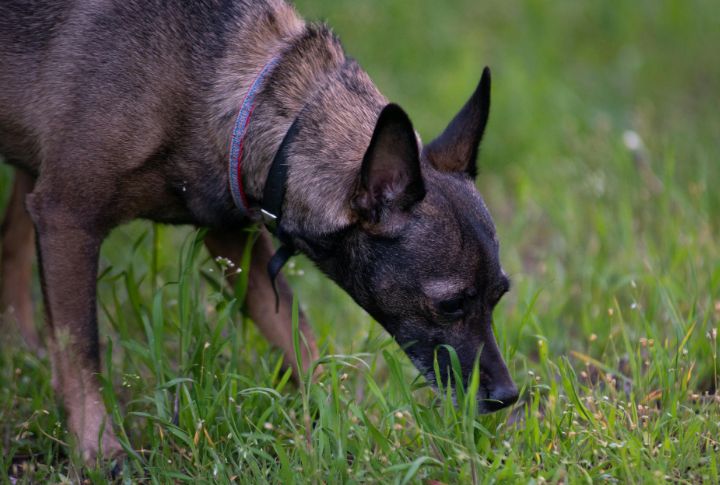15 Insights Into Your Dog’s Mind You Didn’t Know

Dogs have been our companions for thousands of years, yet their minds remain full of surprises. Have you ever wondered what your dog dreams about or how they recognize your emotions? Science has uncovered astonishing insights into their brains—some will make you smile, and others might leave you in awe. Ready to be amazed?
A Dog’s Nose Detects Scents At Unbelievable Levels

A dog’s nose is astonishing in its capabilities. Packed with up to 300 million olfactory receptors, it detects scents at concentrations as low as one part per trillion. That’s how they track missing people and lost items. Their world is experienced through layers of scent to reveal unimaginable detail.
Dogs Feel More Than Just Love

The American Psychological Association’s research reveals that dogs experience joy and share a deep emotional link with humans. Their brains release oxytocin, the same hormone responsible for human bonding. When you cuddle with them, their brain activity mirrors that of a person embracing a loved one.
Dogs Remember More Than Just Commands

Dogs remember more than commands—they recognize places, routines, and past experiences. While their memory works differently than ours, they can recall specific events for extended periods. Some have even demonstrated episodic memory by remembering what happened and when—challenging the idea that these fur babies only live in the moment.
Dogs Understand Human Gestures

Pointing, nodding, or shifting your gaze? Yes, your dog notices every move. Unlike most animals, dogs have evolved to interpret human gestures without training. They naturally understand pointing and eye direction, often reading subtle cues better than chimpanzees. This ability strengthens their connection with us, making them expert human interpreters.
A Wagging Tail Holds Hidden Clues

A dog’s tail movements carry specific meanings, and they reflect its emotional state. Researchers found that right-side wags are linked to positive emotions, while left-side wags indicate stress. The speed and height of a wag also matter, with slow or stiff wags often signaling anxiety or aggression.
A Dog’s Paw Preference May Reveal Its Personality

Though the connection is uncertain, a dog’s paw preference influences its temperament. Left-pawed dogs may be more cautious, right-pawed ones more confident, and ambidextrous dogs more adaptable. Socialization, early experiences, and daily interactions further shape their unique personalities.
Whiskers That Sense The Invisible

Whiskers serve as facial features and precision sensors. These specialized hairs detect even the slightest changes in air currents, allowing dogs to sense nearby obstacles without sight. They help with movement detection and even spatial awareness. In a way, whiskers function as a built-in radar system for dogs.
Dogs Can Smell Diseases

The National Library of Medicine confirms that dogs can detect diseases remarkably. By identifying volatile organic compounds in breath and sweat, they have successfully detected cancer, diabetes, and even seizures. This accuracy in diagnosis also rivals some medical tests and proves their potential as living health monitors.
Dogs See Color, But Differently

Dogs do see color, just differently from humans. Their world appears in shades of blue and yellow, while reds and greens can be dull or gray. Adaptation as such helps them detect movement and contrast in low light, an advantage inherited from their wolf ancestors for survival in the wild.
Playtime Sharpens The Mind

Playtime strengthens a dog’s mind by sharpening problem-solving skills and boosting adaptability. Games like tug and puzzle toys improve memory, impulse control, and coordination. Structured play also fosters social skills and emotional well-being. The National Library of Medicine research confirms that mental stimulation through play enhances learning and cognitive function in dogs.
Dogs Dream Just Like Humans

Have you ever noticed your dog twitch, whimper, or “run” in their sleep? That’s because they enter REM sleep, the phase where dreams occur. Research from the American Psychological Association and the National Library of Medicine indicates they likely dream about familiar activities, where they replay moments like playing fetch or hearing your voice.
Dogs Hear Sounds That Humans Can’t

These canines can hear frequencies reaching 60,000 Hz, whereas humans can only detect frequencies up to 20,000 Hz. The heightened ability allows them to pick up ultrasonic sounds from rodents and even the hum of electronics. So, if your pet reacts unexpectedly, it may be tuning in to noises far beyond human perception.
Dog’s Bathroom Activities Align With Earth’s Magnetic Field

Have you ever noticed your dog circling before doing their business? It’s not just a habit—research suggests they align with Earth’s magnetic field. Many dogs prefer to relieve themselves along a north-south axis, though scientists are still puzzled about why. Could it be an internal compass or something more?
Dogs Can Read Your Emotions

Your pet studies you closely. They not only recognize happy or sad faces but also adjust their behavior. This advanced emotional recognition is shaped by domestication, co-evolution, extensive exposure to human expressions, and reliance on social cues. This is why they have exceptional emotional intelligence compared to any other animal.
Dogs Solve Problems In Unexpected Ways

From opening doors to navigating mazes, these four-legged companions show remarkable problem-solving skills. Some breeds even excel at independent thinking when faced with obstacles. They can assess situations and adapt their approach, proving that their intelligence combines obedience and innovation.






